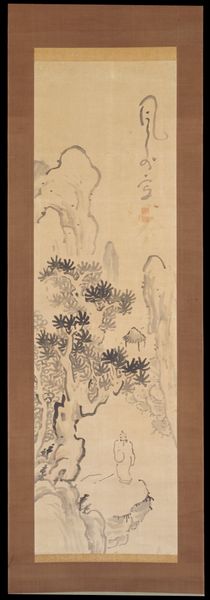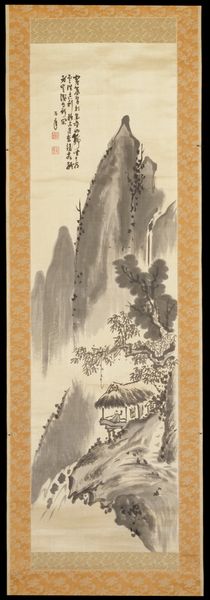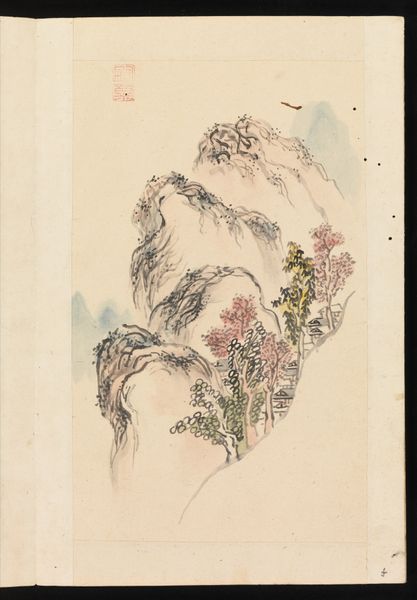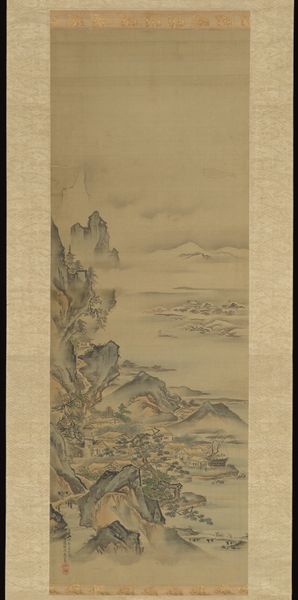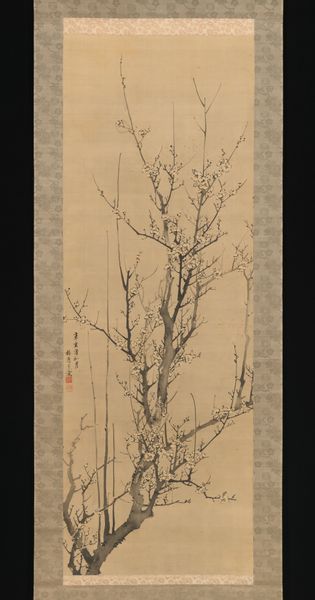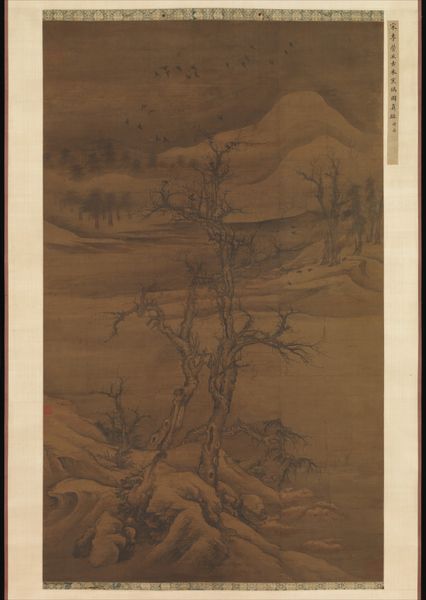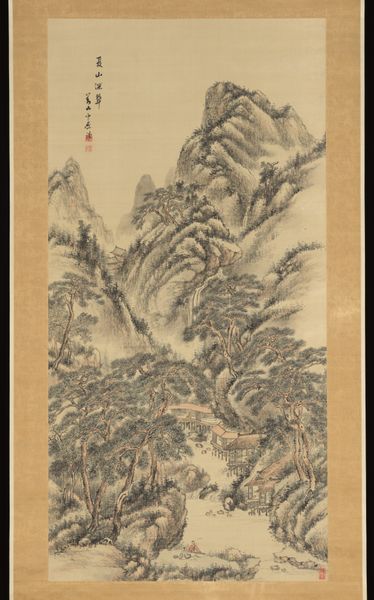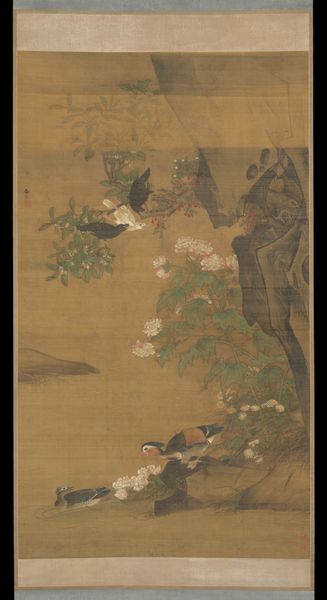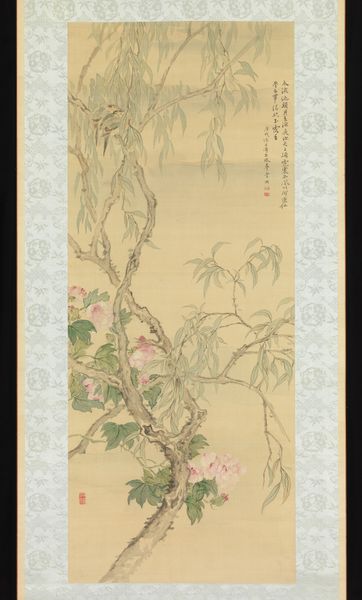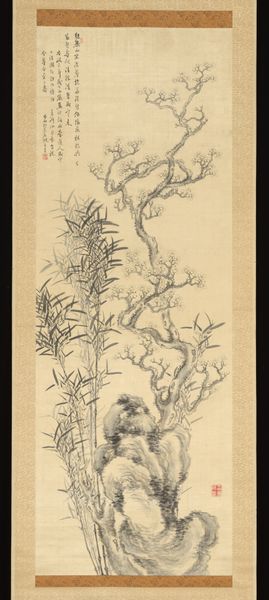
drawing, hanging-scroll, ink
#
drawing
#
asian-art
#
landscape
#
japan
#
hanging-scroll
#
ink
#
calligraphy
Dimensions: 44 1/4 x 13 5/16 in. (112.4 x 33.81 cm) (image)
Copyright: Public Domain
Editor: This hanging scroll, titled "Landscape," was created by Fujimoto Tesseki in 1861 using ink on paper. There's such a tranquil quality to the scene; the soft brushstrokes and muted tones create this feeling of serene isolation. What cultural contexts shape our understanding of this artwork? Curator: Well, the piece reflects the prominent Nanga school, which found inspiration in Chinese literati painting. Viewing "Landscape" through a socio-political lens reveals the complex relationship between Japan's artistic identity and its interaction with foreign cultures, especially China. How do you think the rise of Nanga affected traditional artistic institutions? Editor: I suppose it challenged the existing structures. Did the literati painters operate outside those traditional systems? Curator: Absolutely! The literati or "bunjin" cultivated their art in a world apart from court patronage. And this interest in amateurism over rigid professionalism offered critiques of authority and academies, infusing landscape with commentary on social change, challenging established art markets in doing so. Editor: That’s fascinating! The painting feels so divorced from conflict at first glance. I now recognize that seemingly peaceful composition contains its own quiet form of rebellion! Curator: Precisely. Art never exists in a vacuum. Looking beyond the idyllic scenery, you uncover an insightful piece within larger cultural conversations happening at the time. It's a subtle act, embedding political statements into such seemingly traditional and peaceful art. Editor: So, reading the “Landscape” as social commentary really deepens my appreciation. I had originally thought of it only as a serene portrayal of nature, not as something questioning cultural institutions!
Comments
No comments
Be the first to comment and join the conversation on the ultimate creative platform.

